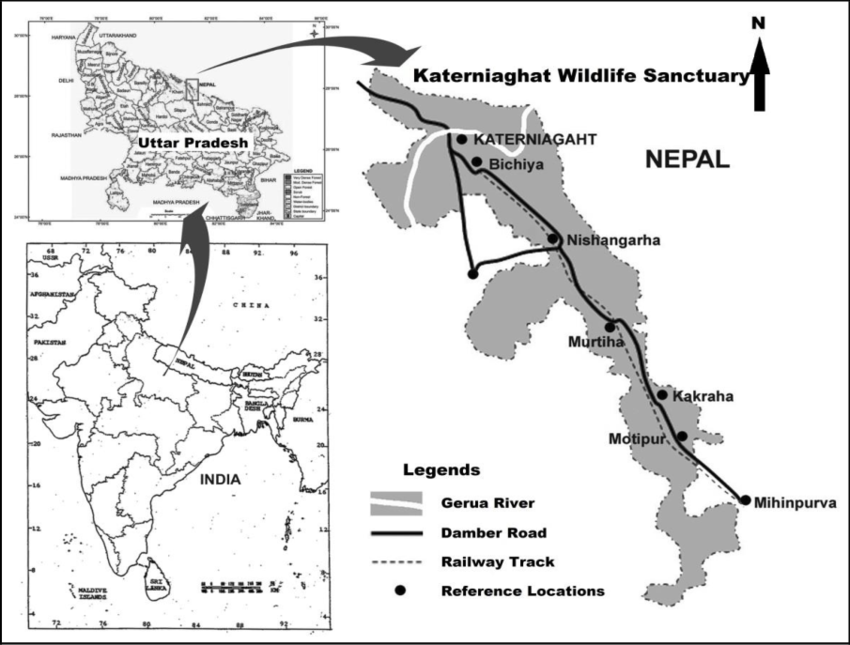Katarniaghat Wildlife Sanctuary: Biodiversity Hub and Conservation Priority
Why in the news?
Katarniaghat Wildlife Sanctuary, a crucial part of India’s conservation efforts, is in focus due to its role in protecting endangered species, maintaining ecological balance, and safeguarding the habitat of the endangered Gangetic dolphins.
Key Points: Katarniaghat Wildlife Sanctuary (KWS)
- Katarniaghat Wildlife Sanctuary (KWS) is located in the Upper Gangetic Plain of Uttar Pradesh and forms part of the Dudhwa Tiger Reserve, along with Dudhwa National Park and Kishanpur Wildlife Sanctuary.
- Spanning 09 sq.km., KWS was designated under Project Tiger in 1987 and serves as a vital corridor connecting tiger habitats in Dudhwa, Kishanpur, and Nepal’s Bardia National Park.
Ecological Significance:
- The sanctuary’s ecosystem is diverse and fragile, consisting of sal and teak forests, grasslands, swamps, and wetlands.
- KWS hosts a variety of flora, including Terminalia alata (Asna), Lagerstroemia parviflora (Asidha), Adina cordifolia (Haldu), Mitragyna parviflora (Faldu), and Gmelina arborea (Gahmhar), contributing to its rich biodiversity.
Wildlife and Conservation:
- The sanctuary is home to several endangered species, such as the Bengal tiger, one-horned rhinoceros, swamp deer, hispid hare, Bengal florican, and vultures like the white-backed and long-billed.
- The Gairwa River running through the sanctuary is an important habitat for Mugger crocodiles, gharial, rare turtles, freshwater fish, and diverse aquatic life.
- KWS is also one of the few places in India where the endangered Gangetic dolphins thrive in their natural habitat, emphasizing the sanctuary’s significance for biodiversity conservation and ecological protection.
Katarniaghat Wildlife Sanctuary plays a critical role in preserving endangered species, maintaining ecological balance, and supporting biodiversity in the region. Its designation as part of Project Tiger highlights the importance of this sanctuary in India’s conservation efforts.





